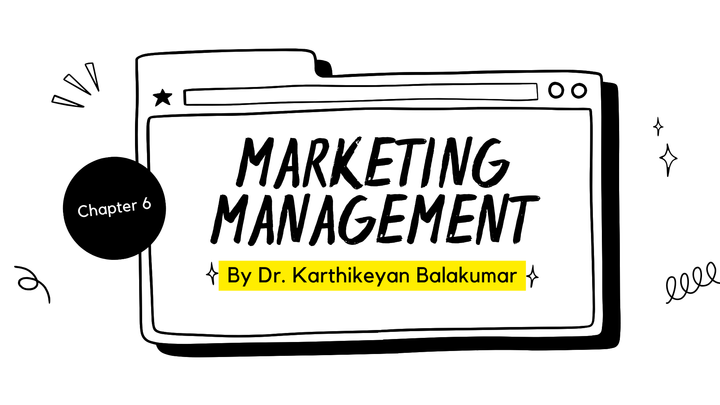Developing the Marketing Research MBA Course - 2021 edition

Last week, when preparing for the marketing research course that I was to teach, I decided to critically review the slides from my previous course (the principles of marketing) to recap and create linkages whenever possible. While doing so, something struck me. I thought, perhaps it would be a good idea to document how I plan for my class presentations and share some of the homework I did. The hope is that someone out there might find it useful, and may possibly take this forward a notch.
To begin with, Marketing research is a really boring subject for MBA students. I remember sleeping off in a few of Prof. Hari Shreekumar’s (He’s also my senior and I sincerely hope he does not read this) marketing research classes way back in 2013 (when I was an MBA student at IIM Trichy). Part of the reason why marketing research is boring is its sheer breadth. There is no way one person can actually be interested in the breadth that the subject has to offer. This is precisely why methods courses are split into qualitative and quantitative in PhD level courses. This does not mean that the course cannot be taught. All that I’m trying to say is, in its current form, it’s boring to teach and possibly also listen to a vanilla marketing research course.
Having said that, the subject is really interesting if you look at it not as ‘marketing research’ but as ‘consumer insights’. This is argued quite well by Mills and Hair (2021) paper link: https://journals.sagepub.com/doi/full/10.1177/02734753211046448. After having read the Mills and Hair paper, I was bubbling with ideas (there are many papers in the journal of marketing education that are very good, especially from a teacher’s point of view).
Among the many ideas I was considering, the one that I zeroed in on was the following: I decided that I would take up an actual problem and get my hands dirty along with the students. After a little bit of creative thinking, I decided to discuss pizza delivery times, and wanted to explore with students if we could realistically make the claim that a firm could deliver pizzas in under 30 minutes. When searching for freely available datasets, I stumbled upon the d.pizza dataset from the desctools R library (find more about this dataset here: https://rdrr.io/cran/DescTools/man/d.pizza.html). One thing led to another, and I was brushing up on hypothesis testing, confidence intervals, plotting histograms, density plots, box plots and ridge plots. Every mistake I made, I made a note of to see if the students also made similar mistakes. More often than not, these were excellent opportunities to teach and highlight critical ideas. The plan was to highlight these issues in class using humour, and think of as many possibilities before hand and develop visualizations to help illustrate to students. Here’s a glimpse of some of the content I made for my class.
On this slide, I show them a frequency distribution of the entirety of the delivery times data. Observe how it is not very easy to say with just visual inspection that pizza delivery times were under 30 minutes. Some students think this is sufficient information, others think otherwise.
I then break the data into its constituent factors and show them a wrapped set of histograms. At this point, things are getting much clearer, and I can drive home the idea of hypothesis testing (which they covered once before in the basic stats course).
On that note, I think you will find Steven (2017) from the journal of statistics education really useful. You can find the link here: https://www.tandfonline.com/doi/full/10.1080/10691898.1994.11910464. In summary ,what Steven (2017) tells us is that we could pick up two packs of cards, and sub-select only the red ones. And get students to guess how long it would take until a black card is drawn. After a few draws students start smelling fish and basically enquire with me if the pack of cards really has 26 black cards. From there on, I go on to explain the hypothesis testing aspect, and draw parallels with the Pizza example.
I then go on to build two sample t tests, and explain how we compare means of two samples. And introduce them to ANOVA and how Anova can be used to test the equivalence of multiple samples’ means. Then I introduce them to the idea of linear regression and ask them if they think temperature at the time of delivery and amount of time it would take to deliver could be related. After seeing the picture, I ask them if the linear model is the best way to explain the data we have with us. And leave them there with us. By the end of this entire exercise (which happened last week), my students are really curious to find out more about marketing research, and the more advanced techniques that it has to offer.
The real class was a totally engaging learning experience, with lots of jokes, insights, learnings, pictures, and discussion. I now want to find a richer dataset and work on more serious questions. Hopefully, I will have that completed by next year.



